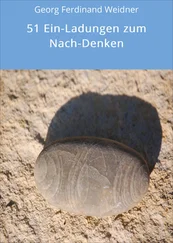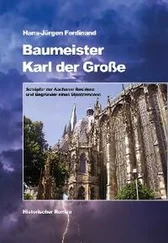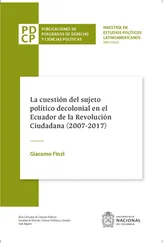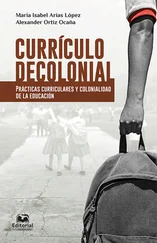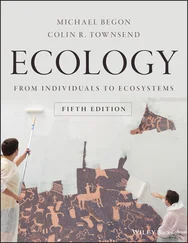1 ...8 9 10 12 13 14 ...18 The second part, “Noah’s Ark,” reveals how environmentalism and the technocentric approach to ecological issues lead to the reinforcement of colonial ruptures passed down from colonization. This is carried out through an examination of examples of public policy concerning the reforestation of a park in Haiti, a nature reserve on the island of Vieques off the coast of Puerto Rico, and the consequences of the contamination of Martinique and Guadeloupe by a toxic pesticide called chlordecone. Counterproductively, this approach allows for an ecology that refuses the world and reinforces colonial discrimination and social inequalities: a colonial ecology .
The third part, “The Slave Ship,” shows the other path that is followed by those who connect protest against ecological degradation with a decolonial critique. Here, the slave ship is no longer just a historical ship but the imaginary scene from which one sets out for a shore, in view of a world made in the image of the ecology of fugitives from slavery , the Maroons. Another reading of Thoreau’s ecological writing and the actions of his mother and sisters indicates that the decolonial task is not only the responsibility of the colonized, the enslaved, and the racialized but is also the responsibility of free men and women, exemplifying a civil marronage . These two examples feature those for whom ecology is intimately linked to a search for a world, to a liberation from their condition as colonial enslaved persons: a decolonial ecology .
Finally, the fourth part, “A World-Ship,” moves beyond the stalemate of modernity’s double fracture which contrasts the refusals and quests for the world in order to suggest paths towards world-making . I suggest we conceive of ecological thinking neither as a Noah’s Ark nor as a slave ship but in terms of a world-ship whose horizon is the encounter with the other. These encounters allow us to form a body in the world [ prendre corps au monde ] and to renew a caring relationship with Mother-Earth. They also make it possible to forge interspecies alliances where the cause of animals and the demand for the emancipation of Negroes are seen as common problems. These encounters are only possible if a bridge of justice is built across the environmental and colonial fracture, making non-humans count politically and legally as well as seeking justice for the colonized and the enslaved. This bridge of justice opens up the horizon of a world: a worldly-ecology .
Readers will recognize an affinity for the figure of the ship, and particularly that of the slave ship, as a political metaphor for the world. Each chapter is preceded by the names of real slave ships, their historical routes, and their contents, which I freely recount in prose. This choice is intended to give a literary sensibility to the displacement that is required for thinking from the world’s hold, while at the same time revealing the other side of modernity that adorns itself with luminous ideals, using names such as Justice and Espérance [Hope], but which spreads injustice and despair. It also allows us to see that the slave ship tells a story about the world and the Earth. Using this metaphor is above all the recognition of the capacity for ships to concentrate the world within them. From Christopher Columbus’s Niña to container ships, from trawlers to warships, from whalers to oil tankers, from slave ships to migrant ships capsizing in the Mediterranean, through their functions, routes, and cargo, ships reveal the relationships of the world. Following the extended metaphor of the slave ship gives voice to the ambition of going beyond the double fracture through a sutural writing, passing from one side to the other, in order to weave together presences and thoughts and to stretch the sails of the world-ship facing the tempest.
1 1 Aimé Césaire, A Tempest, trans. Richard Miller (New York: Theatre Communications Group, 1992), p. 2.
2 2 Romain Cruse, Une géographie populaire de la Caraïbe (Montreal: Mémoire d’encier, 2014), pp. 50–62.
3 3 Henry Paget, Caliban’s Reason: Introducing Afro-Caribbean Philosophy (London: Routledge, 2002); Consuelo López Springfield (ed.), Daughters of Caliban: Caribbean Women in the Twentieth Century (Bloomington: Indiana University Press, 1997); Maryse Condé (ed.), L’Héritage de Caliban (Pointe-à-Pitre: Éditions Jasor, 1992).
4 4 Pap Ndiaye, La Condition noire: essai sur une minorité française (Paris: Gallimard, 2009); Maxime Cervulle, Dans le blanc des yeux, diversité, racisme et médias (Paris: Éditions Amsterdam, 2013); Nell Irvin Painter, The History of White People (New York: W. W. Norton, 2010).
5 5 Norman Ajari, La Dignité ou la mort: éthique et politique de la race (Paris: La Découverte, 2019).
6 6 Anténor Firmin, De l’égalité des races humaines: anthropologie positive (Paris: Librairie Cotillon, 1885); Magali Bessone, Sans distinction de race? Une analyse critique du concept de race et de ses effets practiques (Paris: Vrin, 2013).
7 7 Dorceta Taylor, The State of Diversity in Environmental Organizations: Mainstream NGOs, Foundations, Government Agencies, University of Michigan, 2014. In order to distinguish graphically the colors “black” (or Spanish negro), “red,” “white,” and “brown” from the thickness of the historical, legal, socio-political, and ontological processes at work in racialization, I use the capital letter for names and adjectives – “Black,” “Negro,” “Red,” “White,” and “Brown.”
8 8 Aimé Césaire, Return to my Native Land, trans. John Berger and Anna Bostock (Brooklyn, NY: Archipelago Books, 2013), p. 57.
9 9 Philippe Descola, Beyond Nature and Culture, trans. Janet Lloyd (Chicago: University of Chicago Press, 2013), pp. 114–68; Bruno Latour, We Have Never Been Modern, trans. Catherine Porter (Cambridge, MA: Harvard University Press, 1993); Pierre Charbonnier, La Fin d’un grand partage: nature et société, de Durkheim à Descola (Paris: CRNS Éditions, 2015).
10 10 Zygmunt Bauman, Wasted Lives: Modernity and its Outcasts (Cambridge: Polity, 2004).
11 11 Christophe Bonneuil and Jean-Baptiste Fressoz, The Shock of the Anthropocene: The Earth, History, and Us, trans. David Fernbach (London: Verso, 2016).
12 12 Hicham-Stéphane Afeissa, “Comme chiens et chats: le conflit fratricide entre éthique environnementale et éthique animale,” in Nouveaux Fronts écologiques: essais d’éthique environnementale et de philosophie animale (Paris: Vrin, 2012), pp. 99–144.
13 13 J. Baird Callicott, Éthique de la Terre (Marseilles: Wildproject, 2011). [Translator’s note: This volume includes French translations of Callicott’s work from the 1980s through the 2000s, many of which appear in Callicott, In Defense of the Land Ethic: Essays in Environmental Philosophy (Albany: State University of New York Press, 1989) and Beyond the Land Ethic: More Essays in Environmental Philosophy (Albany: State University of New York Press, 1999).]
14 14 William Cronon, Uncommon Ground: Rethinking the Human Place in Nature (New York: W. W. Norton, 1996).
15 15 Lewis Gordon, An Introduction to Africana Philosophy (Cambridge: Cambridge University Press, 2008), pp. 3–7.
16 16 Frederick Cooper, Colonialism in Question: Theory, Knowledge, History (Berkeley: University of California Press, 2005).
17 17 Will Steffen, Paul Crutzen, and John R. McNeill, “The Anthropocene: Are Humans Now Overwhelming the Great Forces of Nature?” AMBIO: A Journal of the Human Environment 36/8 (2007): 614–21.
18 18 Translator’s note: France hexagonale, or l’Hexagone, is a term for “mainland” or “metropolitan France” that playfully undercuts the assumed supremacy of the European territory of France, which is shaped somewhat like a hexagon, in distinction to its overseas departments and regions. Future uses of the term are untranslated.
Читать дальше


